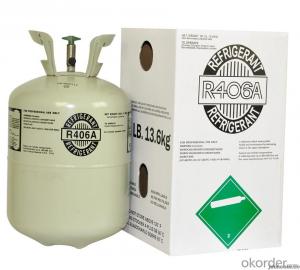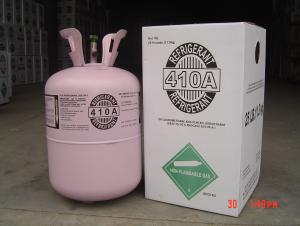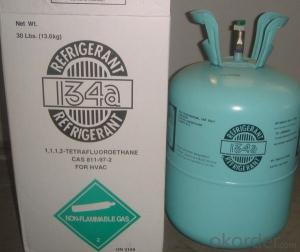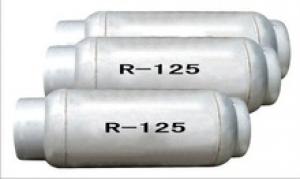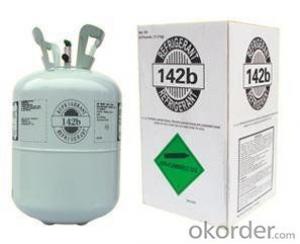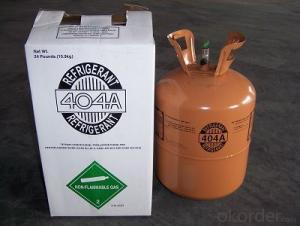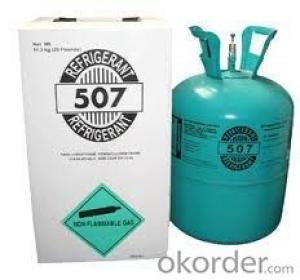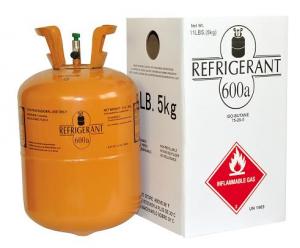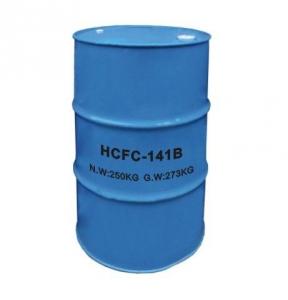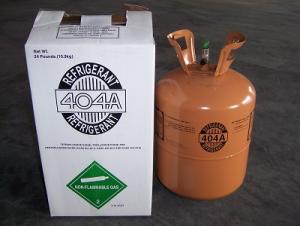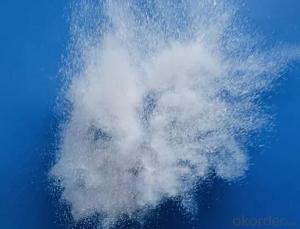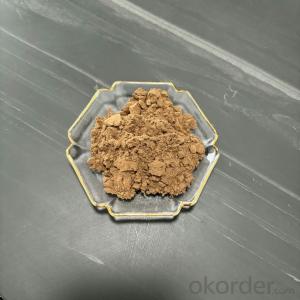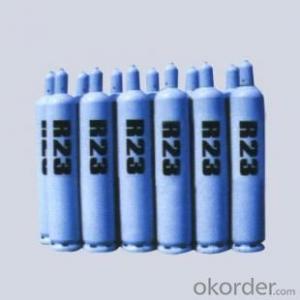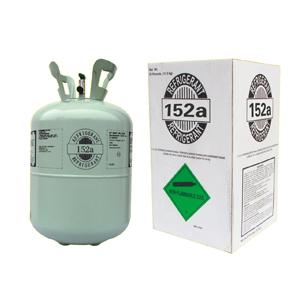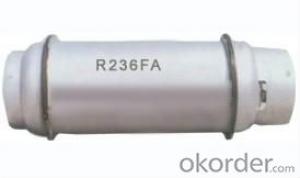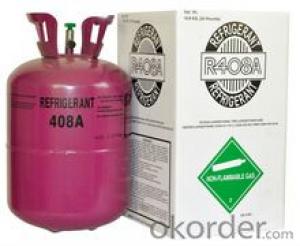Refrigerant R406a
- Loading Port:
- Shanghai
- Payment Terms:
- TT OR LC
- Min Order Qty:
- -
- Supply Capability:
- 1000MT m.t./month
OKorder Service Pledge
Quality Product, Order Online Tracking, Timely Delivery
OKorder Financial Service
Credit Rating, Credit Services, Credit Purchasing
You Might Also Like
Specifications
R406a is a colorless gas under ordinary temperatures, and a colorless&transparent liquid under the pressure of itself
R406a is a colorless gas under ordinary temperatures, and a colorless&transparent liquid under the pressure of itself, mixed by HCFC-22, HCFC-142band R-600a. And it's the substitute for R502 and R12.
| Packing:13.6kg,400kg,800kg | |||
| Physical Properties | Quality Specification | ||
| Molecular formula | Purity, %≥ | 99.8 | |
| Boiling Point, °C | -32.7 | Moisture, ppm≤ | 10 |
| Critical Temperature,°C | 116.5 | Acidity, ppm≤ | 0.1 |
| Critical Pressure,Mpa | 4.88 | Evaporating Residue,ppm≤ | 100 |
| ODP | 0.036 | Appearance | Colourless,No turbid |
| GWP | 0.41 | Odor | No strange stench |
| Liquid Density,g/cm3 | |||
- Q:Is grease a polymer compound? Is it a derivative of saturated hydrocarbons?
- Although the relative molecular mass of oil is large, but does not belong to the polymer compound, the polymer compound should refer to a chain with a base number n of the material. Nor is it a derivative of saturated hydrocarbons. The oil is a non-saturated tallow fatty acid glyceride, and the fat is a saturated glycerol ester of saturated higher fatty acids. The more the double bond, the lower the boiling point
- Q:What are the characteristics of organic compounds?
- Organic compounds are usually referred to as carbon-containing compounds, or hydrocarbon-containing compounds and their derivatives are collectively referred to as organic matter. Organic compounds are generally insoluble in water and soluble in organic solvents with lower melting points. The vast majority of organic matter heat easily decomposed, easy to burn. The reaction of organic matter is generally slow and often accompanied by side effects, and there are many kinds of organic compounds, which can be divided into two major categories of hydrocarbon and hydrocarbon derivatives. According to the organic groups contained in the functional groups, divided into alkanes, alkenes, alkynes, aromatic hydrocarbons and alcohols, aldehydes, carboxylic acids, esters and so on. According to the organic carbon molecular structure, can also be divided into open chain compounds, carbocyclic compounds and heterocyclic compounds three categories.
- Q:What is the hydrocarbon thing
- Hydrocarbon, which is composed of two elements, consists of carbon and hydrogen. It is called a hydrocarbon and a hydrocarbon, which reacts with chlorine, bromine vapor, oxygen and so on. It does not react with strong acid, strong base, strong oxidizer (Such as: potassium permanganate) reaction, such as methane and chlorine in the light conditions of reaction to produce methyl chloride, dichloromethane, chloroform (chloroform) and tetrachloromethane (carbon tetrachloride) and other derivatives in the Hydrocarbon molecules in the carbon atoms connected to each other to form a carbon chain or carbon ring molecular skeleton, a certain number of hydrogen atoms attached to the carbon atoms, so that each carbon atom to maintain the price of the type of hydrocarbon is very much, the structure of known hydrocarbons More than 2,000 hydrocarbons are the parent of an organic compound. Other organic compounds can be seen as derivatives of one or more hydrogen atoms in the hydrocarbon molecule that are replaced by atoms or radicals of other elements. Word, is the use of "carbon" consonant with "hydrogen" vowel synthesis of a word, with "carbon" and "hydrogen" the composition of the internal structure of the word, the hydrocarbon is the parent of all organic compounds can be said that all Organic compounds are nothing but the result of replacing some of the atoms in the hydrocarbons with other atoms.
- Q:NH4HCO3 and so have C atoms ah, why still inorganic
- Organic definition is not all elements, if only look at carbon atoms, then graphite and carbon dioxide are also areas of organic matter, so this is not the case. In general, organic matter is defined as containing atomic elements, which can be combusted, low density, low melting point, strong volatility, poor solubility in water, etc., which are composed of carbon atoms and covalent bonds.
- Q:Why can organic matter be unique in chemical substances? What is the nature of the C atom?
- To give a reason, the current production of more economical temperature control is limited.
- Q:What are the gaseous states of the oxygen-containing derivatives of the hydrocarbons under the standard conditions?
- Hydrocarbon derivatives of oxygen in the standard conditions are gaseous formaldehyde.
- Q:What is the proportion of hydrocarbons synthesized by Fischer-Tropsch Synthese in liquid fuels consumed by Nazi Germany? What are the proportions of these hydrocarbons as an industrial raw material into their military industry, in addition to fuel? At that time, did the Fischer-Tropsch preparations occupy an important position in Nazi Germany's military industry or heavy industry?
- The FT synthesis method is a coal liquefaction technique under an iron-based catalyst (conventional FT method is a cobalt-based catalyst). Mainly syngas (CO and H2-based) saturated alkylation technology.
- Q:Sodium can be used to identify derivatives of hydrocarbons
- A compound in which a hydroxyl group is directly attached to a carbon atom in a hydrocarbon group or a benzene ring side chain is called an alcohol.
- Q:Ionic compounds, covalent compounds, electrolytes, non-electrolytes, which are both compounds and inorganic compounds
- An electrolyte is a compound capable of being conductive in an aqueous solution or in a molten state, such as an acid, a base and a salt. Those compounds that can not be electrically conductive in the above cases are non-electrolytes such as sucrose, alcohol and the like.
- Q:Why is dry ice not organic?
- Dry ice is solid. It is a simple carbonaceous compound that is not the material basis for life. Therefore, dry ice is an inorganic compound
1. Manufacturer Overview |
|
|---|---|
| Location | |
| Year Established | |
| Annual Output Value | |
| Main Markets | |
| Company Certifications | |
2. Manufacturer Certificates |
|
|---|---|
| a) Certification Name | |
| Range | |
| Reference | |
| Validity Period | |
3. Manufacturer Capability |
|
|---|---|
| a)Trade Capacity | |
| Nearest Port | |
| Export Percentage | |
| No.of Employees in Trade Department | |
| Language Spoken: | |
| b)Factory Information | |
| Factory Size: | |
| No. of Production Lines | |
| Contract Manufacturing | |
| Product Price Range | |
Send your message to us
Refrigerant R406a
- Loading Port:
- Shanghai
- Payment Terms:
- TT OR LC
- Min Order Qty:
- -
- Supply Capability:
- 1000MT m.t./month
OKorder Service Pledge
Quality Product, Order Online Tracking, Timely Delivery
OKorder Financial Service
Credit Rating, Credit Services, Credit Purchasing
Similar products
New products
Hot products
